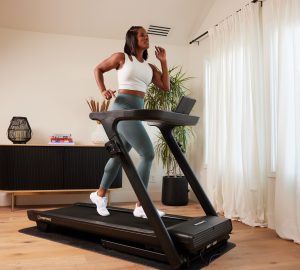Pregnancy is a joyous and exciting time, but it can also bring many physical and emotional changes. Staying active during pregnancy is important for both the mother’s and baby’s health. However, many expectant mothers may feel hesitant about exercising due to the changes in their body and the safety of their growing baby. The good news is that there are plenty of safe and effective ways to stay active and fit during pregnancy. In this article, we will discuss the benefits of exercise during pregnancy, provide practical tips for staying fit, and share some recommended exercises for expectant mothers.
When I found out I was pregnant, I was at the peak of my training and was even considering getting ready for a competition. Many of my friends who think that I train too much tried to get me to slow down or stop training because they said it was detrimental to the baby. I decided to do my own research because I could not see myself not going to the gym, not even for one day.
After speaking to my family physician and doing a lot of research in books and on the internet, here are my findings:
- Women who are active in an exercise program before pregnancy can continue their program. It is not recommended to START a new exercise program during pregnancy. Great! I could continue to lift weights. For pregnant women, developing strong pelvic-floor muscles and core abdominal strength have many positive outcomes.
- Pregnant women (and anyone who lifts weights for that matter) should remember to breathe properly while exercising.
- The heart rate should not be elevated above 150 bpm and the body temperature should remain normal.
- After the first trimester, it is not recommended to lie down on your back. This puts too much pressure on the vena cava which provides blood flow to the foetus.
This information was great. I could continue working out and not get criticised for it. I maintained my 6 days a week of weight lifting. This provided many benefits for me to help with staying active during pregnancy.
During the first trimester, it helped me with mood swings by providing some much needed endorphins. As a social worker, my job is very stressful at times and working out is my way of distressing. It also helped with the tiredness and the nausea. The first 5 minutes of working out were always hard but then as soon as the endorphins kicked in, I felt great.
I was able to maintain my regular training schedule but had to make it a priority in the morning before going to work. After work, my energy levels were too low.
My routine is as follows:
- Monday: Quads, thighs and calves (1.5 hours)
- Tuesday: Chest and forearms (1 hour)
- Wednesday: Hamstrings, thighs and calves (1.5 hours)
- Thursday: Traps, Back and Forearms (1.5 hours)
- Friday: Shoulders, thighs and calves (1 hour)
- Saturday: Arms (biceps, triceps, forearms) (1.5 hours)
Staying active during pregnancy has many benefits and can cause no harm to the baby if the guidelines are followed. Of course, one has to make sure that the stomach is protected at all times and that it doesn’t suffer any impact.
My weight gain has been gradual and I will be able to stay within the recommended guidelines for pregnancy. This will help me get rid of the extra weight postpartum. Also, when training during pregnant, you do not see considerable muscle gain and it is not recommended to lose weight, but the goal is maintenance.
I am positive that my training will help with my labor because my body is strong and ready. Also, when working out, this causes a good stress on the baby which in turn prepares him for the biggest stress of his life: coming out.
Valerie Lessard








